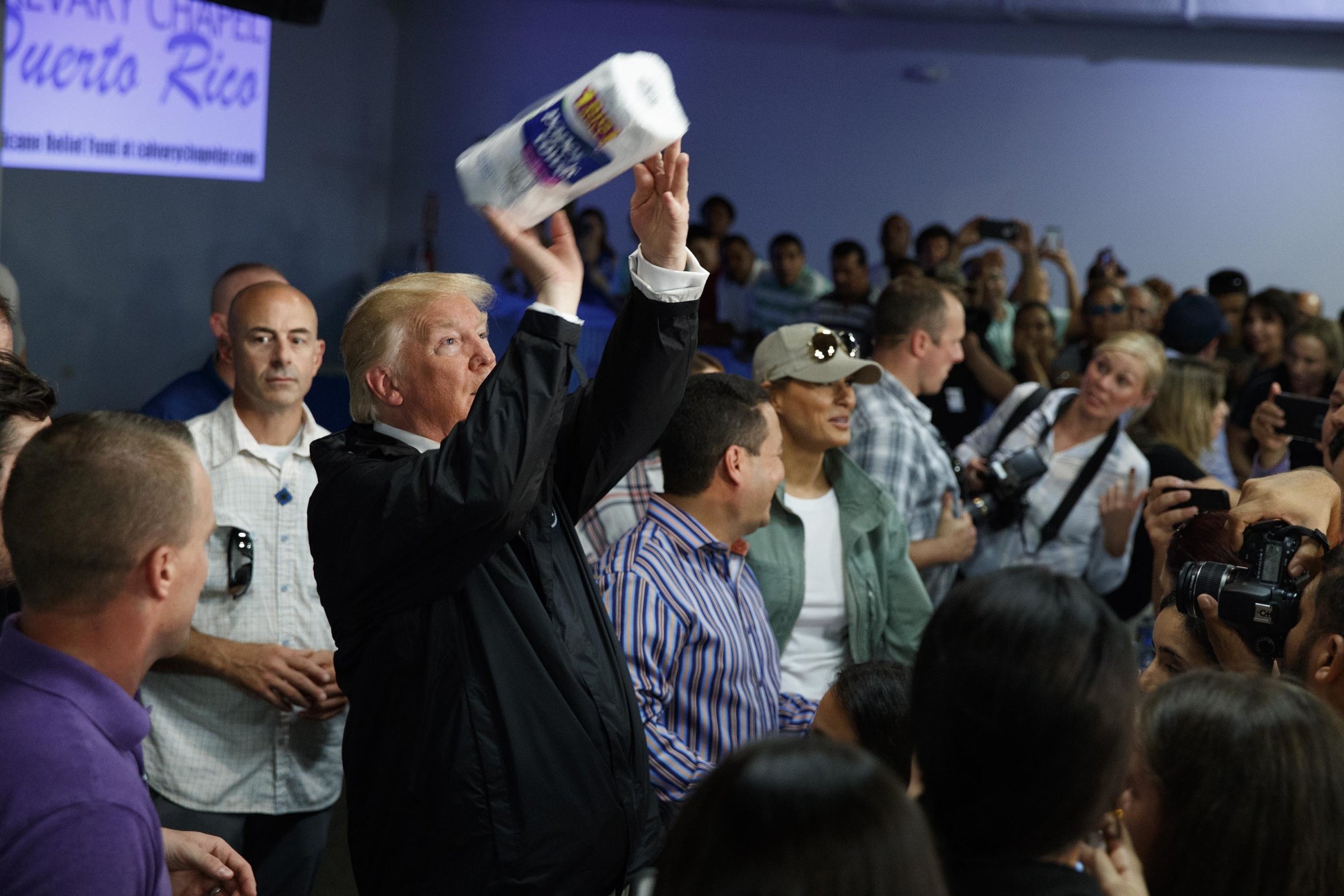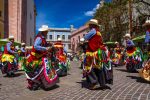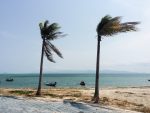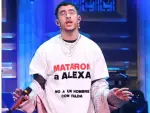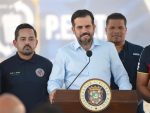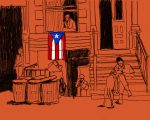On September 20, millions of Puerto Ricans were left without power, water, food and hope.
Hurricane Maria ravaged the United States territory, which is home to over three million American citizens. The detrimental effects of the storm were essentially unaddressed by the President of the United States for several days after the hurricane touched the ground. Even weeks after the tragic event, the damage continues to wreak havoc on the island.
Hurricane Maria was classified as a Category 5, the highest category on the Saffir-Simpson scale, with wind that reached 175 mph. Puerto Rico sustained over thirty hours of wind and rain, and the entire island reportedly lost power. Entire communities were destroyed and it’s been reported that thirty-six lives were officially lost.
As of October 4, 54 percent of Puerto Ricans did not have access to clean water yet. On October 6, Governor Ricardo Rosselló noted that Puerto Rico was up to just 10.7 percent of the island’s normal energy consumption. That was sixteen days after the hurricane originally struck the island. One woman described her home as appearing as if “a fire happened here, not a hurricane.”
Hurricane Maria was disastrous for the small U.S. Territory. President Trump addressed the crisis in Puerto Rico twice via Twitter the day leading up to Hurricane Maria and when the storm actually hit. On September 19, he tweeted, “Puerto Rico being hit hard by new monster Hurricane. Be careful, our hearts are with you—will be there to help!”
The next day, he addressed Governor Rosselló: “Governor @RicardoRossello—We are with you and the people of Puerto Rico. Stay safe! #PRStrong.” Trump did not tweet about Puerto Rico again until September 25. Why? For a President who relies so heavily on Twitter to vocalize his opinions, he was largely silent when his voice mattered to millions of American citizens.
He did, however, manage to tweet over twenty times in two days about the NFL and professional athletes who chose to take a knee during the National Anthem. Regardless of the fact that he was grossly decentering the focus of the professional athletes protesting during the National Anthem, Trump redirected attention away from a catastrophe in Puerto Rico towards peaceful protests at football games. While Puerto Ricans needed Trump’s influence and power for relief, his focus was elsewhere.
Carmen Yulín Cruz Soto, the mayor of San Juan, has voiced her concerns for her island’s safety, as well as her complaints regarding President Trump’s delayed response to the crisis. She underscored Puerto Rico’s intense need for relief, and called for Trump to take action on the island’s persistent debt, which will likely heighten as a result of Hurricane Maria.
Cruz has been incredibly vocal about her complaints with the administration’s response to the people of Puerto Rico. Trump tweeted about FEMA and the relief efforts being made to manage the island’s state. But many of his tweets praised FEMA for doing exactly what they were supposed to do, which was nothing extraordinary.
On September 28, Trump tweeted, “Puerto Rico is devastated. Phone system, electric grid many roads, gone. FEMA and First Responders are amazing. Governor said ‘great job!’” His tweet boasts the compliment given to the Trump administration and Department of Defense employees by Governor Rosselló, but takes the attention away from Puerto Rico as a U.S. territory in need. This is one of Trump’s many superficial attempts to raise awareness of a crisis while simultaneously promoting himself and his administration’s brand.
Mayor Cruz recognized and criticized both the President’s and FEMA’s responses to the damage done by the hurricane. She noted that FEMA employees asked, “What are your priorities, Mayor?” Cruz made it clear that her goal is the health and safety of her community and of the island of Puerto Rico.
She repeatedly mentioned the fact that “people are dying here.” Trump’s remarks about relief efforts in Puerto Rico depict the situation in a positive light. For example, he noted, “It’s been amazing, what’s been done in a short period of time on Puerto Rico.” Again, a self-congratulatory tone seeps through his words.
After Cruz’s rebuke of the weak response and relief efforts initiated by Trump, the President tweeted, “The Mayor of San Juan, who was very complimentary only a few days ago, has now been told by the Democrats that you must be nasty to Trump.” Cruz was sticking up for her city and her island.
Criticism of the government is not inherently “nasty,” despite Trump’s claims in both this tweet and countless others. Trump is simply unwilling to admit that his response to Puerto Rico might not have been as urgent as his responses to Hurricanes Irma and Harvey.
It should be noted that in an analysis of responses to the three major hurricanes that have occurred throughout the Trump administration, “Mr. Trump approved major disaster declarations and ordered federal aid for the states of Texas and Florida, and the Commonwealth of Puerto Rico equally quickly—in each case, on the day the hurricane made landfall,” according to the New York Times. However, subsequent reactions and arrangements made by the President were different when it came to Hurricane Maria.
As mentioned earlier, the President’s tweets were surprisingly sparse with regard to Puerto Rico for many days. Furthermore, Trump did not visit Puerto Rico until almost two weeks after the storm, and did not mention visiting until six days after the storm’s damage was done. For comparison, consider this: Trump visited Texas and Florida four days after Hurricane Harvey and Irma, respectively. He promised to visit these states within three days of the hurricanes making landfall. This discrepancy matters.
Puerto Rico is a United States Territory. Puerto Ricans, therefore, are American citizens. The President’s support to U.S. citizens who are in danger and suffering is indispensable. Furthermore, the inconsistency that Trump displays in his reactions to disasters on the continental U.S. juxtaposed to the island of Puerto Rico illustrates a lack of regard for anyone who does not support him in his quest as President.
This sentiment shows up in his attack on Mayor Cruz. She criticized his actions, so he went to attack her. Trump does the same to anyone who differs from him and who is incompatible with his agenda. Puerto Ricans, despite citizenship in the U.S. and their right to vote in presidential primary elections, cannot vote in U.S. presidential elections.
Trump’s concern lies with those who can directly further his interests. He redirected the attention of the media and his supporters toward the NFL, while a Category 5 hurricane devastated Puerto Rico. His tweets garner attention, and they galvanize his supporters. Puerto Rico was not in his interest because he does not need those American citizens to win elections—at least while they reside in Puerto Rico.
Trump might want to think of the political damage he might incur when Puerto Ricans who were affected by Hurricane Maria decide to move to the continental U.S .(or Hawaii) and vote in the 2020 elections. He should also spend less time tweeting and more time urging Congress to generate a debt plan for Puerto Rico, as they will need financial assistance now more than ever.


